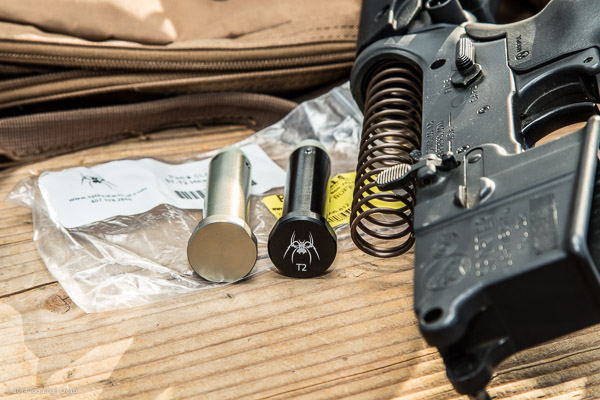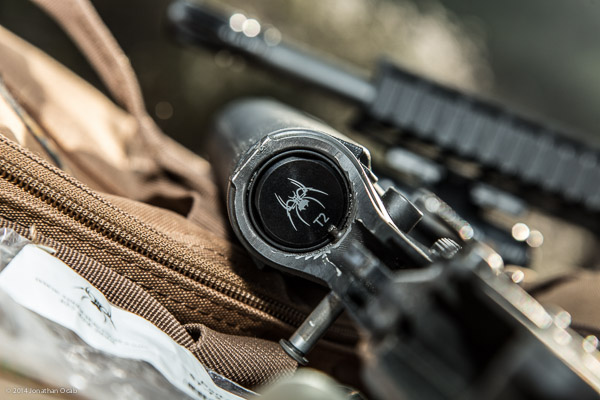When I assembled my recent 16″ mid-length build, I ended up just using a standard carbine buffer. Weighing 2.9 ounces, there’s nothing inherently wrong with using a standard carbine buffer. After all, it’s the standard for carbine gas systems.
But AR-15 rifles with carbine gas systems have always been associated with a snappier recoil compared to rifle length gas systems, as well has having faster cyclic rates. These prompted the creating of the mid-length and intermediate length gas systems in order to slow down gas system operation.
Longer gas systems meant longer dwell time, the amount of time the bolt remains closed on the chamber as the round is fired and the bullet travels through the bore, before the gases enter the gas port thereby opening the bolt. Longer dwell time meant a slower cyclic rate, which meant better recoil characteristics and also better pressure / gas management in the AR-15.
On top of that, various weight buffers have been made which allows for more tuning of a specific rifle. A heavier recoil buffer means the bolt operates slower during cycling.
That said, I decided to try a heavier buffer in my recent 16″ mid-length build. I didn’t think too much of the buffer when I initially ordered all the parts. The reason why I bought a 16″ mid-length was to get the desired recoil characteristics versus a 16″ carbine gas length barrel.
During the initial break-in and testing, my rifle didn’t show any ‘overgassing’ characteristics. Ejected brass wasn’t flying wildly far or inconsistently. Fired brass didn’t show hard ejector marks and the rims don’t have hard extractor damage. Plus the rifle cycles just fine.
But it seems like the goal for many is to run as heavy a buffer as possible before the gun loses consistent function.
Thus, I bought a Spikes Tactical ST-T2 Heavy Buffer to see if my gun can run a heavier buffer. The ST-T2 specification indicates a weight of 155 grams (4.05 ounces). This means a buffer weight difference of about 1.1 ounces between the standard carbine buffer and the ST-T2.
I fired 10 rounds with the standard carbine buffer and the ejected brass landed 8 to 8.5 feet away at about 2:30.
I replaced the standard carbine buffer with the ST-T2 and shot another 10 rounds.
The ejected brass landed 8.5 to 9 feet away at about 3:30.
The brass in both cases show little to no differences in terms of ejector or extractor markings.
As far as recoil, I could definitely tell that the gun’s cycling / recoil characteristics were different (‘softer’)with the ST-T2. How much different, I can’t quantitatively measure.
So right now, I can’t really say that it was worth going with a heavier buffer. I’m not sure if I’ll ever be able to say that it gave me any real practical gains. But the Spikes Tactical ST-T2 Heavy Buffer cost less than $40, so it wasn’t much of an investment either way.
But if your AR-15 with a carbine, mid-length, or intermediate gas system is showing overgassing signs and/or is just exhibiting some very fast cycling, you should definitely give a heavier buffer a try.



The State Of The Rifle – December 2015 | ocabj.net
[…] The change of buffer was more of an experiment than anything. Going with a heavier buffer is usually something done on 16? or shorter barrels with carbine length gas systems due to the hard cycling of the gun. But with a midlength, it’s usually not a requirement. I ended up acquiring a Spike’s Tactical ST-T2 which is a ‘heavy’ weight buffer at 4.05 ounces vs the 2.9 ounces of the standard carbine buffer. I saw no gains from this change, but I ended up leaving the ST-T2 in the rifle since I had already picked it up and it didn’t have negative impact on the gun’s performance. […]